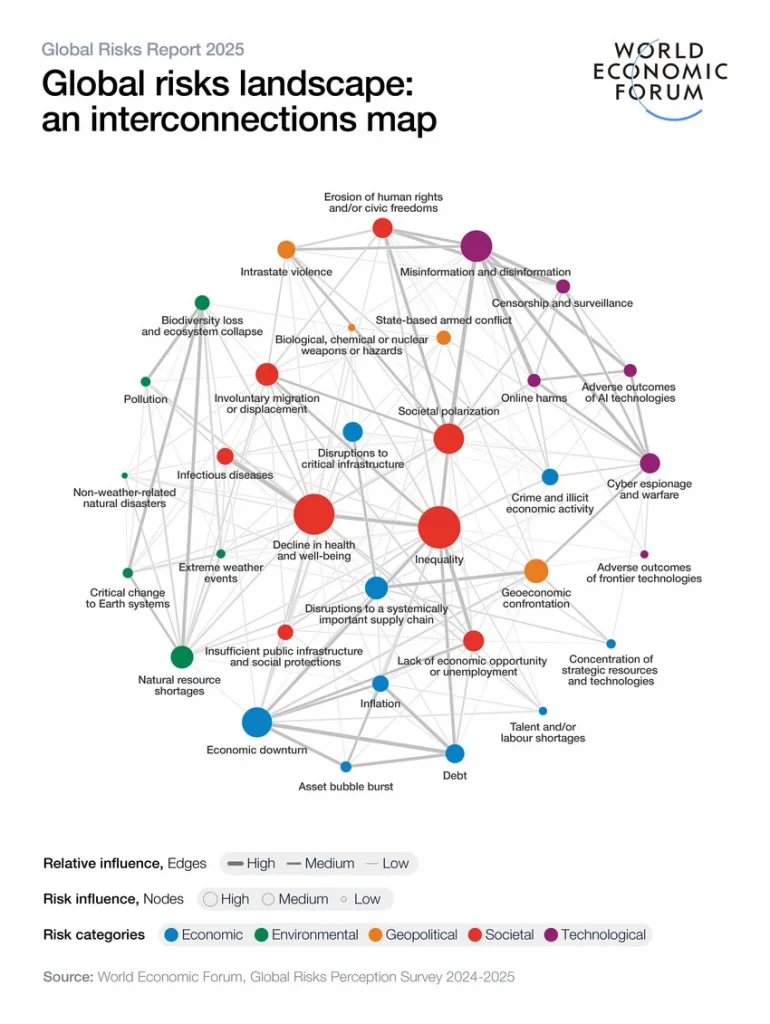Global Risks Report 2025: Interconnected challenges

The World Economic Forum’s Global Risks Report 2025 paints a sobering picture of our world’s future. It highlights the deeply interconnected nature of challenges in very different areas.
For companies in the maritime sector trying to determine security threats and risks to their operations, it is crucial to understand how various factors influence – and amplify – one another.

A fragmented world
The report shows a world that is increasingly divided and faces geopolitical tensions, environmental crises, societal polarization, and technological vulnerabilities. All these issues are contributing to a sense of global fragility. Fragmentation is not just a collection of isolated issues, but an intricate web of interconnected risks that feed into and exacerbate one another.
Domino effects
State-based armed conflict has been identified as the top immediate concern for 2025. This risk is closely tied to geoeconomic confrontation, which ranks third in the short-term outlook. The report highlights how geopolitical instability can lead to economic tensions, trade disruptions, and potential cyber warfare, creating a cycle of instability that affects multiple domains.
While geopolitical risks dominate the immediate concerns, environmental challenges loom large over the longer term. Extreme weather events, biodiversity loss and ecosystem collapse rank among the top long-term risks. These environmental threats are not isolated issues either. They interconnect with societal risks such as involuntary migration, food insecurity, and economic instability.
Technology and societal polarization
The report also emphasizes the role of technology in exacerbating societal divisions. Misinformation and disinformation, powered by advancing AI technologies, top the list of short-term risks. “Digital pollution” feeds into societal polarization, eroding trust in institutions and complicating efforts to address other global challenges.
Perhaps the most alarming insight from the report is the growing risk of polycrises – situations where multiple crises interact in ways that amplify their combined effects. This concept underscores the importance of understanding the interconnected nature of global risks and the need for holistic, collaborative approaches to address them.
Navigating risks
For the private sector, it is increasingly important to adopt integrated risk management approaches, invest in resilience and engage in multistakeholder collaboration to address global challenges. It is important that security challenges and broader geopolitical issues are not just downside risk.
Companies which have built an effective system to identify aspects that are relevant for the respective business, they can identify opportunities early or prepare for sudden challenges much better than competitors. In the maritime sector, that could translate into trading in an area where few other companies want to operate. It could also mean to establish wide-ranging contingency measures to prepare for sudden crises.
It may be hard to calculate a specific return on investment in this field. Nevertheless, it is very likely that it will provide a significant boost to commercial results – almost certainly in the long term, possibly even within just a few months.

